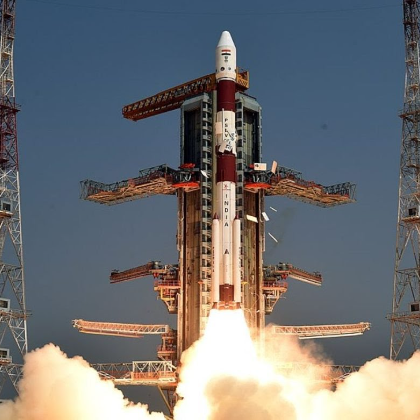India’s Eminent Space Agency ISRO (Indian Space Research Organisation) has developed a semi-cryogenic engine for its future space missions. The new semi-cryogenic engine will be tasked to do much of the heavy-weight lifting for the Agency. It is an advancement in rocket technology that is superior to the current cryogenic engine which is currently under use by ISRO for GSLV (Geo-Synchronous Launch Vehicle) The GSLV is a three-stage heavy-lift launch vehicle used to launch heavy satellites into space.
Cryogenics is the study of the production and behaviour of materials at very low or extremely low temperatures (minus 150 degrees). A cryogenic engine provides a greater force with each kilogram of cryogenic propellant which is far more effective than the solid/liquid fuel propellant. The Cryogenic Engine uses liquid hydrogen and liquid oxygen as propellants. A propellant is a chemical mixture which is burned to provide thrust in rockets.
There are some disadvantages posed by cryogenic engines: the use of liquid hydrogen at extremely low temperatures is very difficult to store being the smallest gas. The cost of using liquid hydrogen is a prohibitive factor.
On the other hand, a semi-cryogenic engine uses refined kerosene instead of liquid hydrogen. It uses liquid oxygen as an oxidiser. Kerosene is much lighter than liquid fuel and can be stored at a normal temperature. The Kerosene combined with liquid oxygen provides more thrust to the rocket. Compressed Natural Gas (CNG) can also be used as fuel.
It also occupies less space which makes it possible to have more propellant in the fuel compartment or tank. The semi-cryogenic engine is more environment-friendly, cost-effective and more powerful compared to a cryogenic engine. It can carry a huge weight to a higher altitude. Moreover, the payload can be increased since the weight of the fuel will come down by 500kg. Under deep throttle, it will provide and work with much higher operability.
The Semi Cryogenic engine will also be used in the Gaganyaan Mission. India’s strategic partner Russia is offering its semi-cryogenic technology along with critical components for this mission. The chairman of ISRO, Sivan has stated that the technology will be transferred under the “Make in India Programme”. The engines will be built in India only.
There are a few disadvantages which come to the forefront regarding cryogenic propellants. The fuel used in the cryogenic engine is easily combustible and ignition can cause explosions. Secondly, cryogenic storage tanks must be developed to withstand extreme temperatures and pressure. The storage tanks will require thicker walls and strong alloys. Thirdly, cryogenic fuel is very toxic in nature and can be fatal if inhaled. It will provide higher levels of asphyxiation.
India is currently working on the Semi-Cryogenic Engine (SCE-200) as India’s Space program needs to move to the next level. The SCE-200 project was approved in 2009 for 1798 Crores. It is being developed by the Liquid Propulsion Systems Center one of the four main pillars of ISRO. The other three are the Vikram Sarabhai Space Center (VSSC), ISRO Inertial Systems Unit (IISU) and the Indian Institute of Space Science and Technology (IIST).
With the help, aid and assistance of Russia, the Indian Space Programme will witness growth and fame with leaps and bounds. India will be able to join the league of developed nations that pioneer in the domain of space.




















Comments